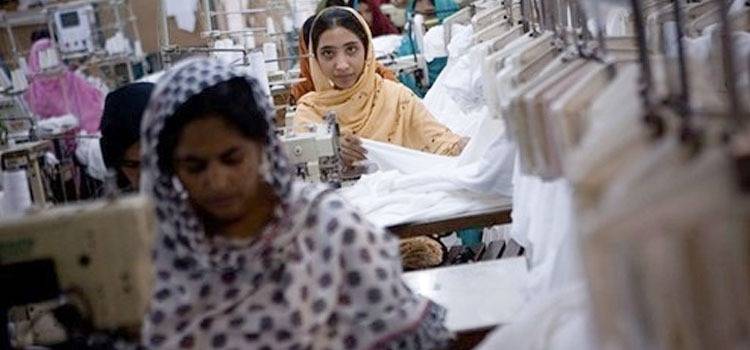
Pakistan's women labour force participation is one of the lowest in the region, according to latest World Bank data covering statistics from around the world.
The data puts the county's female participation (over 15 years of age) at 25 percent, a little better than India's 23 but staggering when compared to neighbouring Bangladesh's 37%.
China, that Pakistan looks up to in terms of development, has a 62% female labour participation, followed by New Zealand (65), Australia and Canada (61), US (56), Indonesia (54), and Japan (53).
Interestingly, Afghanistan, which is often criticised these days for depriving womenfolk of education, isn't much farther than Pakistan or India, and stands at 16%, while Iran has a 15%.
African countries like Cambodia, , Kenya, Eritrea, Liberia, Mozambique have the highest ranking, as none of them is below 70% in terms of the participation.
Why is the percentage low in Pakistan?
According to a report, women are more than half of the Pakistan’s population, but women’s participation in the formal professional sector is disproportionally low. Growing inequalities are becoming increasingly evident in the context of digital knowledge and skills, and limited access to technology. Therefore, women are way behind as the result of this digital gender divide.
This also indicates that technology and digital world is not gender inclusive. Thus, women’s participation in digitalization is low and they have access to far fewer opportunities on digital platforms such as social media platforms. There are some small-scale initiatives and innovations on technology and digital forum for women, but they are very insignificant in terms of promotion of gender equality.
The challenges
One of the other big challenges is the exclusion of a large population of women from the digital revolution, particularly rural women, who are mainly employed in agricultural labor, home-based work, textile industry and low-paid job informal sector.
A mix of poverty, low literacy rates, unavailability of the internet and computing tools plays a part in this exclusion. Unfortunately, the digital revolution also presents a risk of perpetuating existing patterns of gender inequality; consequently, women and young girls are deprived of reaping benefits from digital opportunities.
The data puts the county's female participation (over 15 years of age) at 25 percent, a little better than India's 23 but staggering when compared to neighbouring Bangladesh's 37%.
China, that Pakistan looks up to in terms of development, has a 62% female labour participation, followed by New Zealand (65), Australia and Canada (61), US (56), Indonesia (54), and Japan (53).
Interestingly, Afghanistan, which is often criticised these days for depriving womenfolk of education, isn't much farther than Pakistan or India, and stands at 16%, while Iran has a 15%.
African countries like Cambodia, , Kenya, Eritrea, Liberia, Mozambique have the highest ranking, as none of them is below 70% in terms of the participation.
Why is the percentage low in Pakistan?
According to a report, women are more than half of the Pakistan’s population, but women’s participation in the formal professional sector is disproportionally low. Growing inequalities are becoming increasingly evident in the context of digital knowledge and skills, and limited access to technology. Therefore, women are way behind as the result of this digital gender divide.
This also indicates that technology and digital world is not gender inclusive. Thus, women’s participation in digitalization is low and they have access to far fewer opportunities on digital platforms such as social media platforms. There are some small-scale initiatives and innovations on technology and digital forum for women, but they are very insignificant in terms of promotion of gender equality.
The challenges
One of the other big challenges is the exclusion of a large population of women from the digital revolution, particularly rural women, who are mainly employed in agricultural labor, home-based work, textile industry and low-paid job informal sector.
A mix of poverty, low literacy rates, unavailability of the internet and computing tools plays a part in this exclusion. Unfortunately, the digital revolution also presents a risk of perpetuating existing patterns of gender inequality; consequently, women and young girls are deprived of reaping benefits from digital opportunities.

